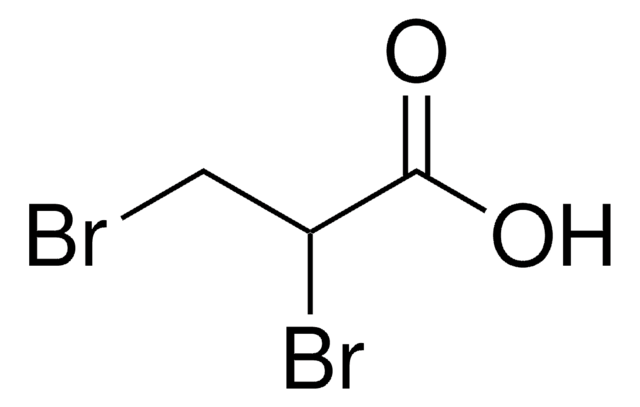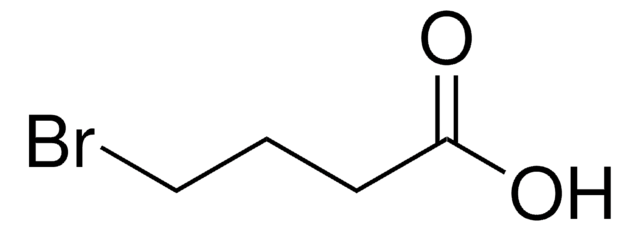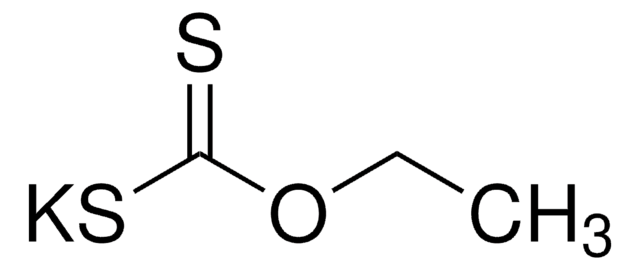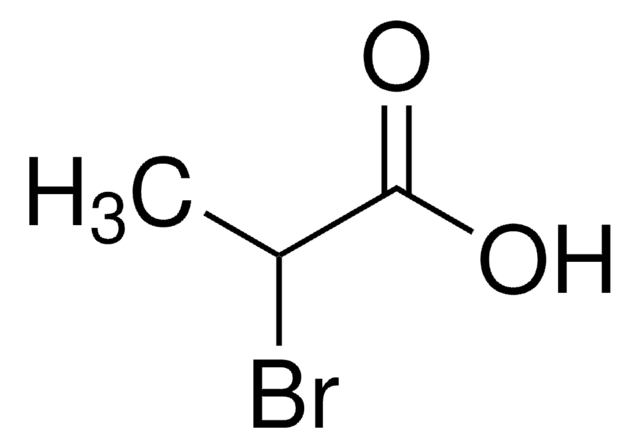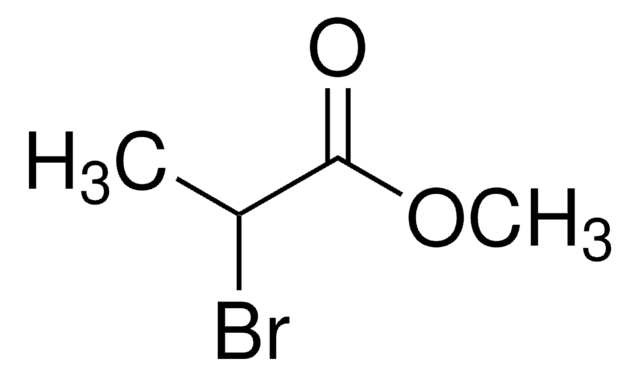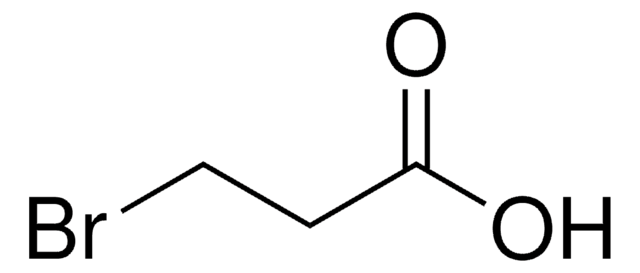147877
2-Bromobutyric acid
97%
About This Item
Prodotti consigliati
Saggio
97%
Stato
liquid
Indice di rifrazione
n20/D 1.474 (lit.)
P. ebollizione
99-103 °C/10 mmHg (lit.)
Punto di fusione
−4 °C (lit.)
Solubilità
water: soluble 15 part
alcohol: soluble
diethyl ether: soluble
Densità
1.567 g/mL at 25 °C (lit.)
Stringa SMILE
CCC(Br)C(O)=O
InChI
1S/C4H7BrO2/c1-2-3(5)4(6)7/h3H,2H2,1H3,(H,6,7)
YAQLSKVCTLCIIE-UHFFFAOYSA-N
Cerchi prodotti simili? Visita Guida al confronto tra prodotti
Applicazioni
Avvertenze
Danger
Indicazioni di pericolo
Classi di pericolo
Acute Tox. 4 Oral - Eye Dam. 1 - Skin Corr. 1B
Codice della classe di stoccaggio
8A - Combustible corrosive hazardous materials
Classe di pericolosità dell'acqua (WGK)
WGK 3
Punto d’infiammabilità (°F)
No data available
Punto d’infiammabilità (°C)
No data available
Dispositivi di protezione individuale
Faceshields, Gloves, Goggles, type ABEK (EN14387) respirator filter
Scegli una delle versioni più recenti:
Possiedi già questo prodotto?
I documenti relativi ai prodotti acquistati recentemente sono disponibili nell’Archivio dei documenti.
Il team dei nostri ricercatori vanta grande esperienza in tutte le aree della ricerca quali Life Science, scienza dei materiali, sintesi chimica, cromatografia, discipline analitiche, ecc..
Contatta l'Assistenza Tecnica.